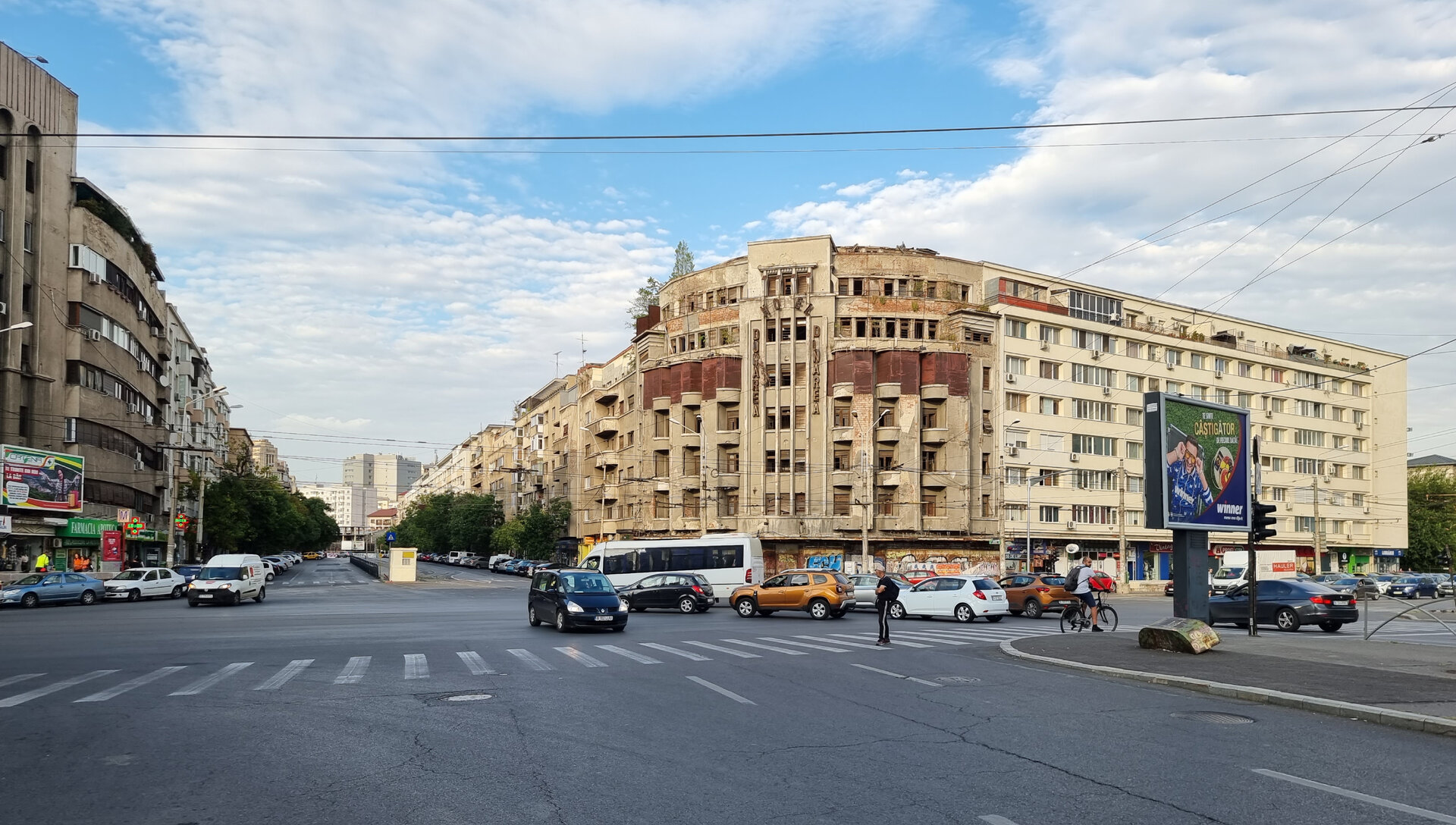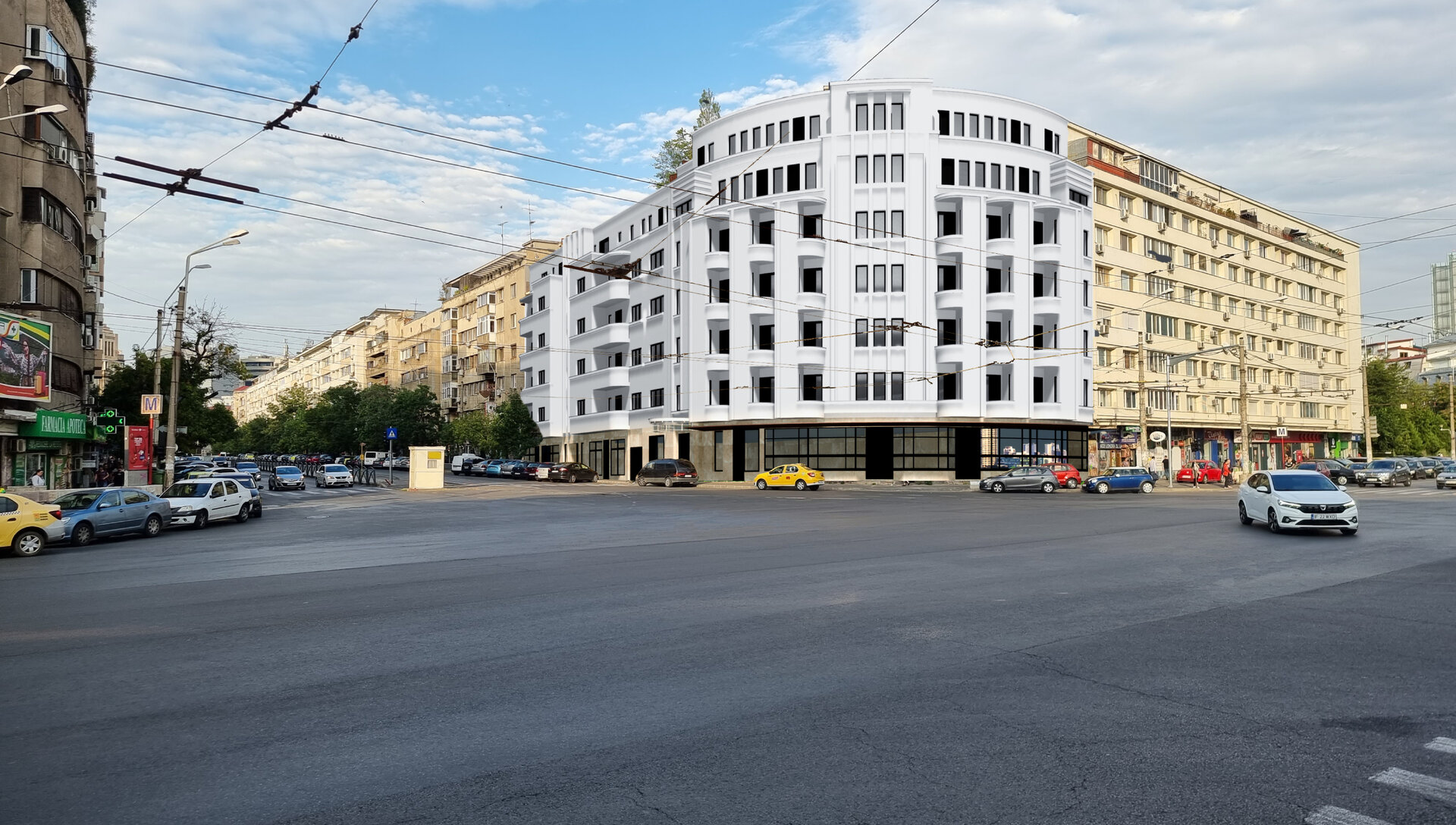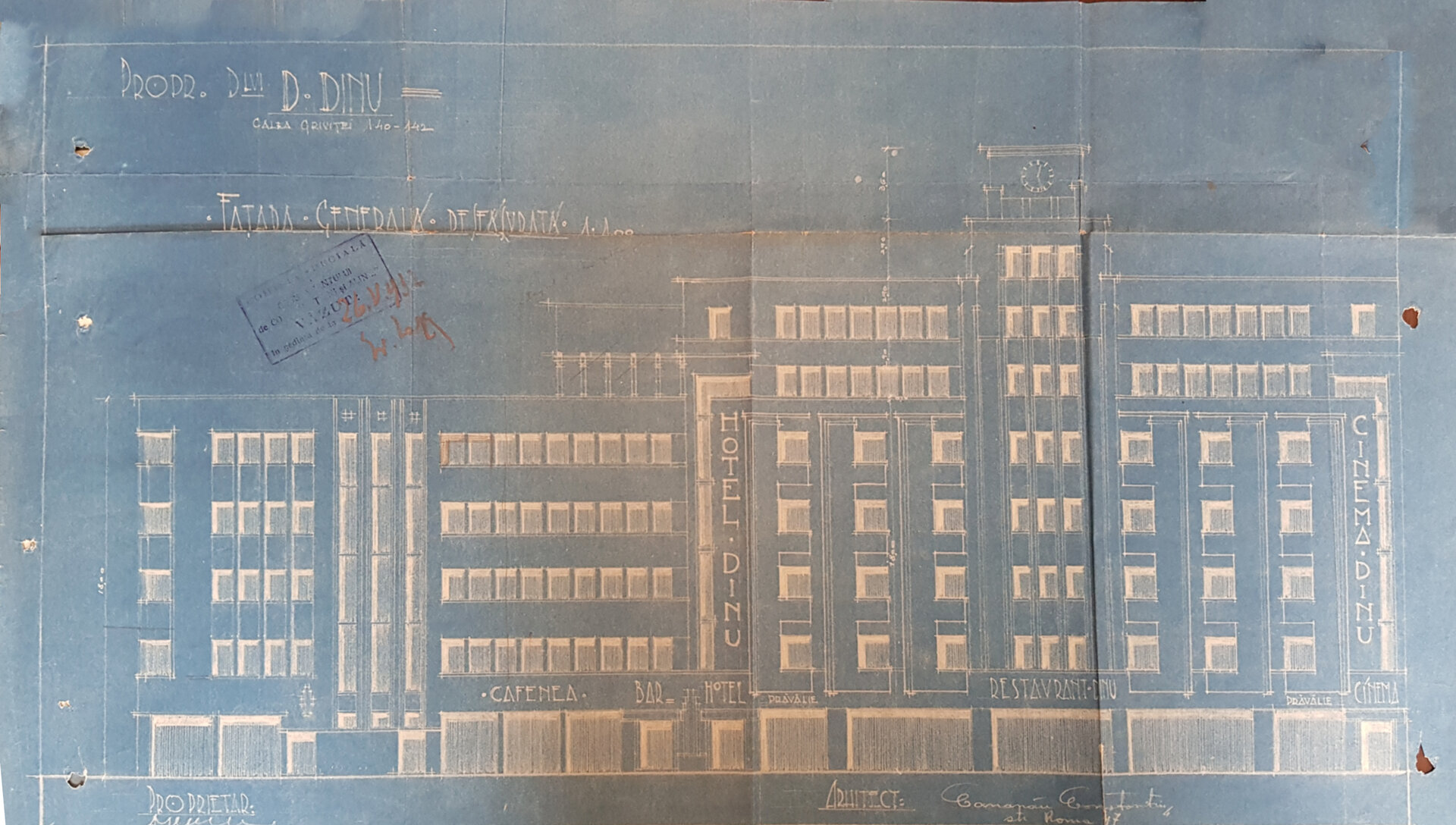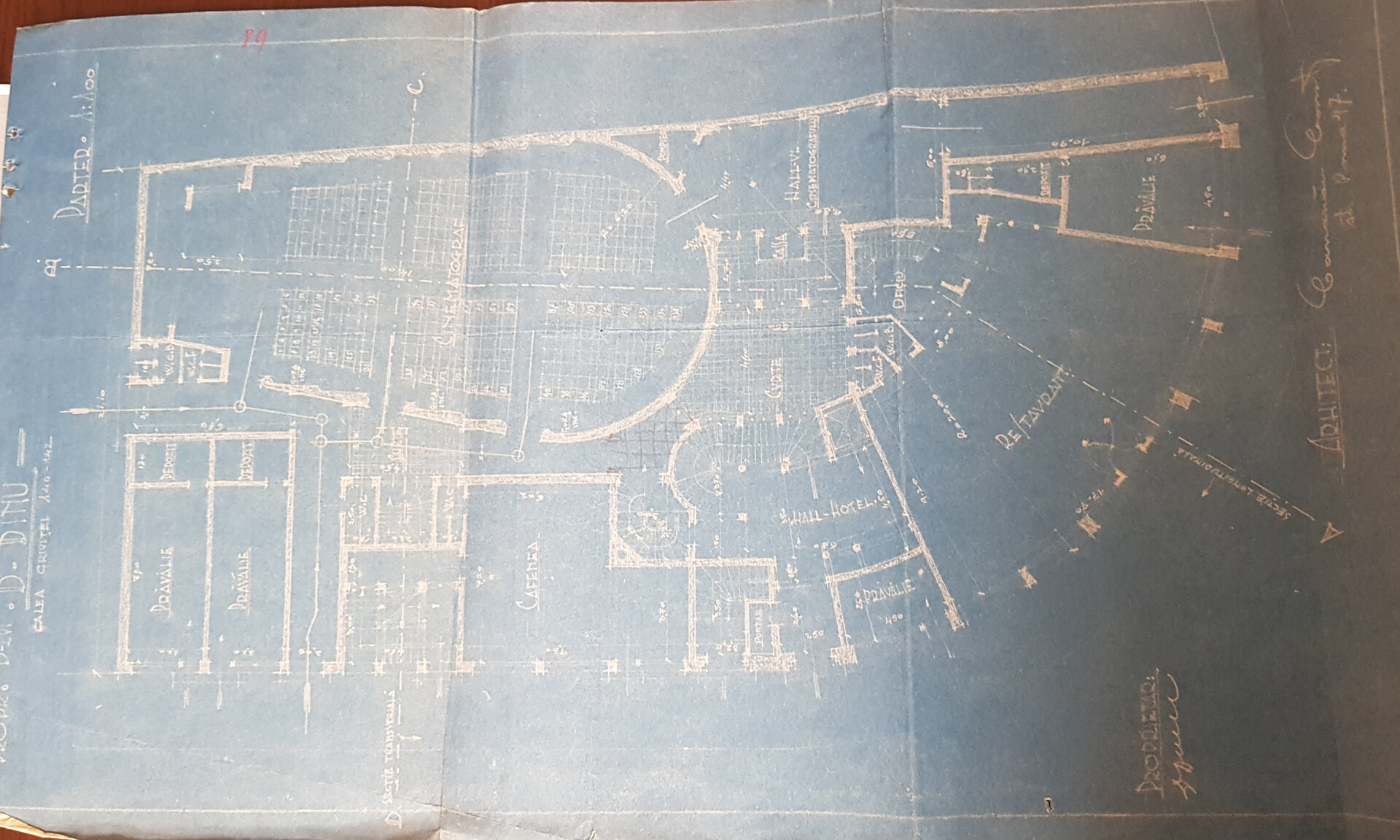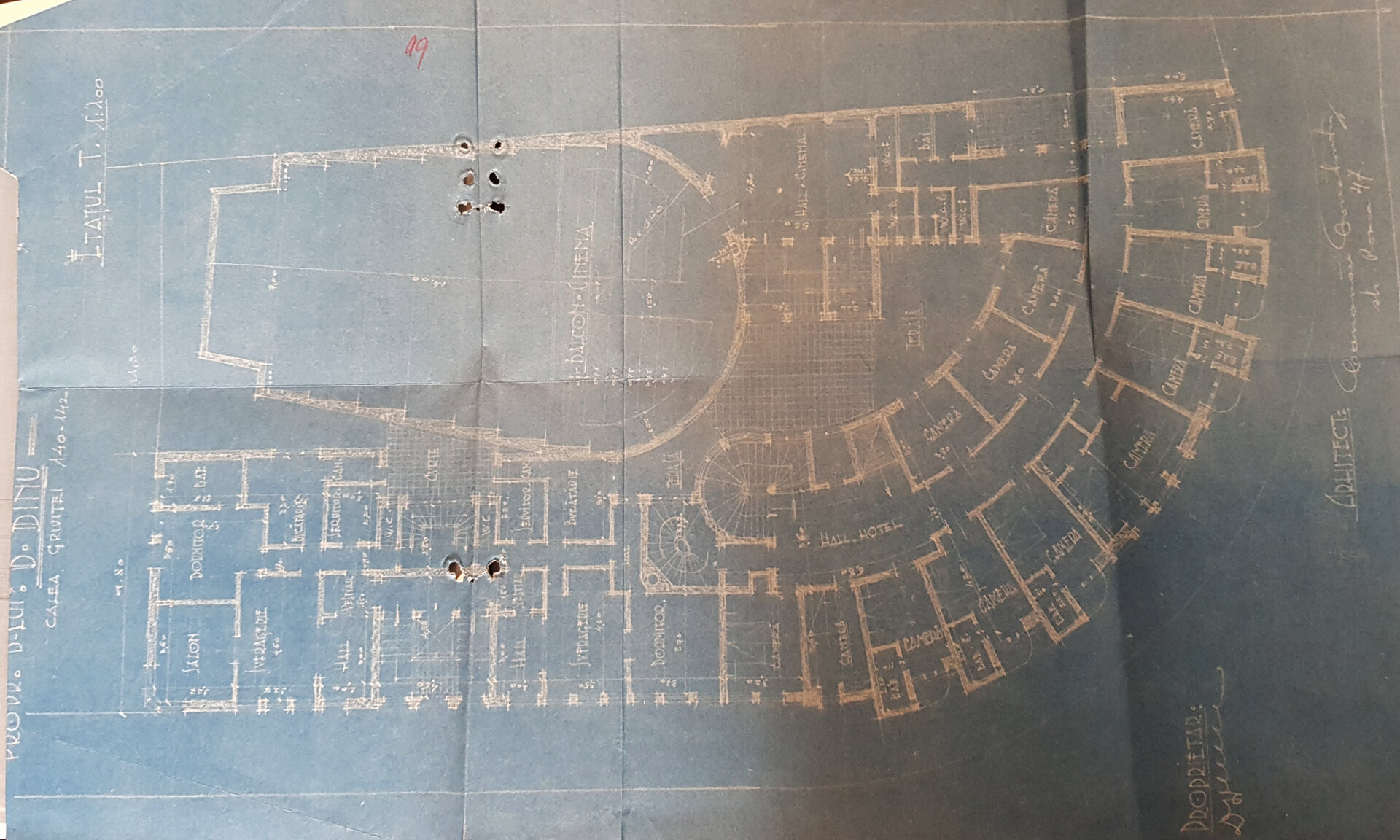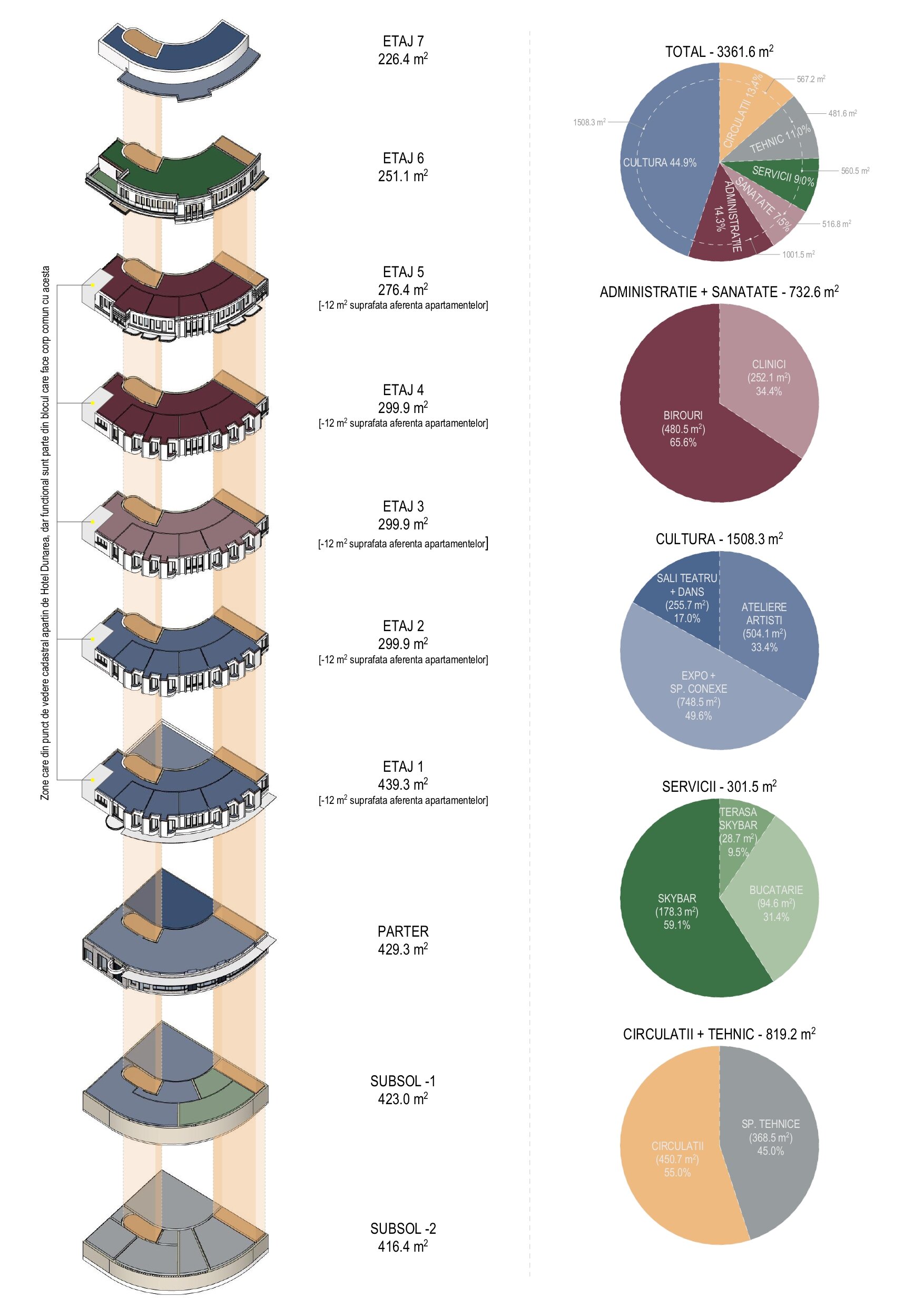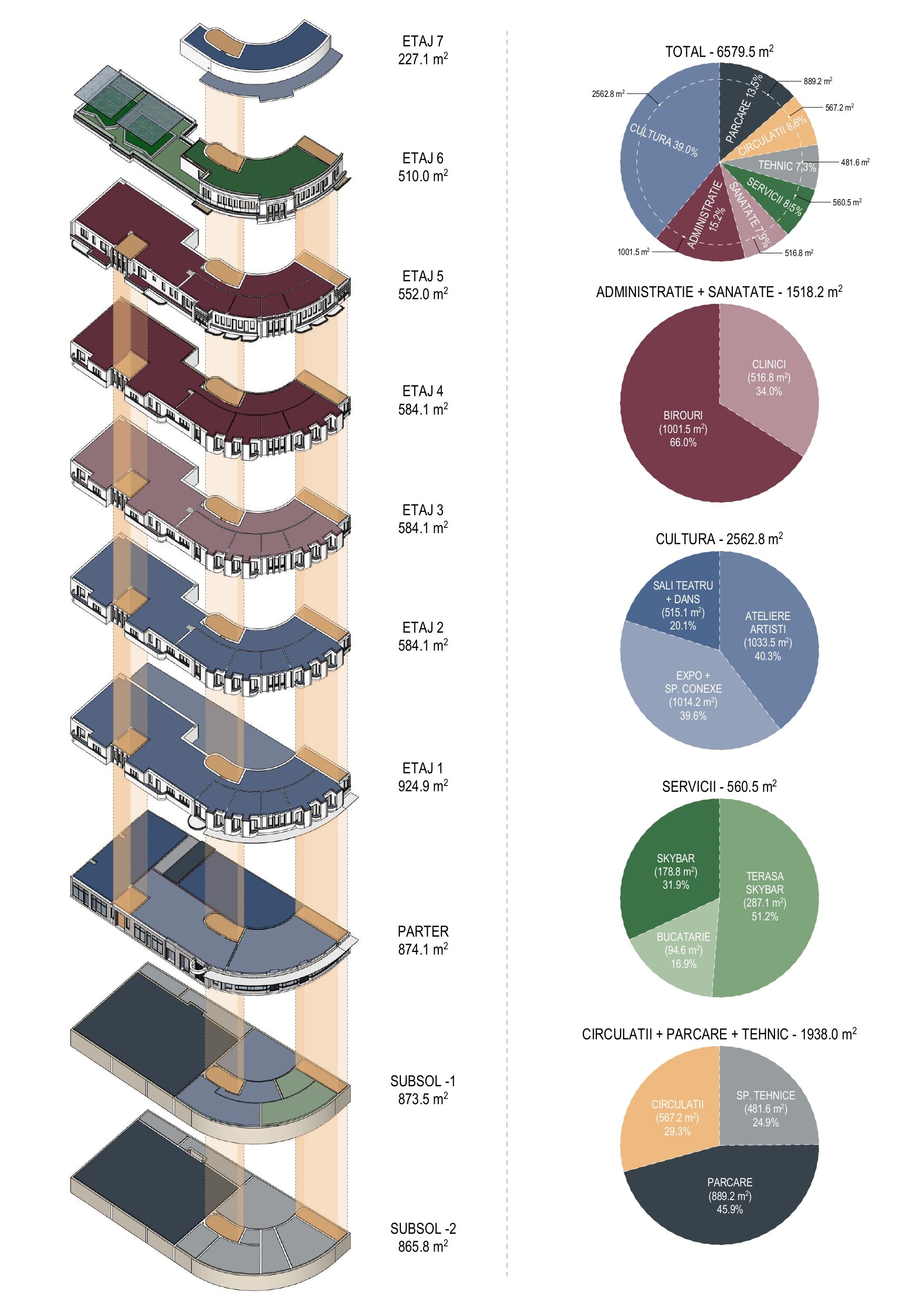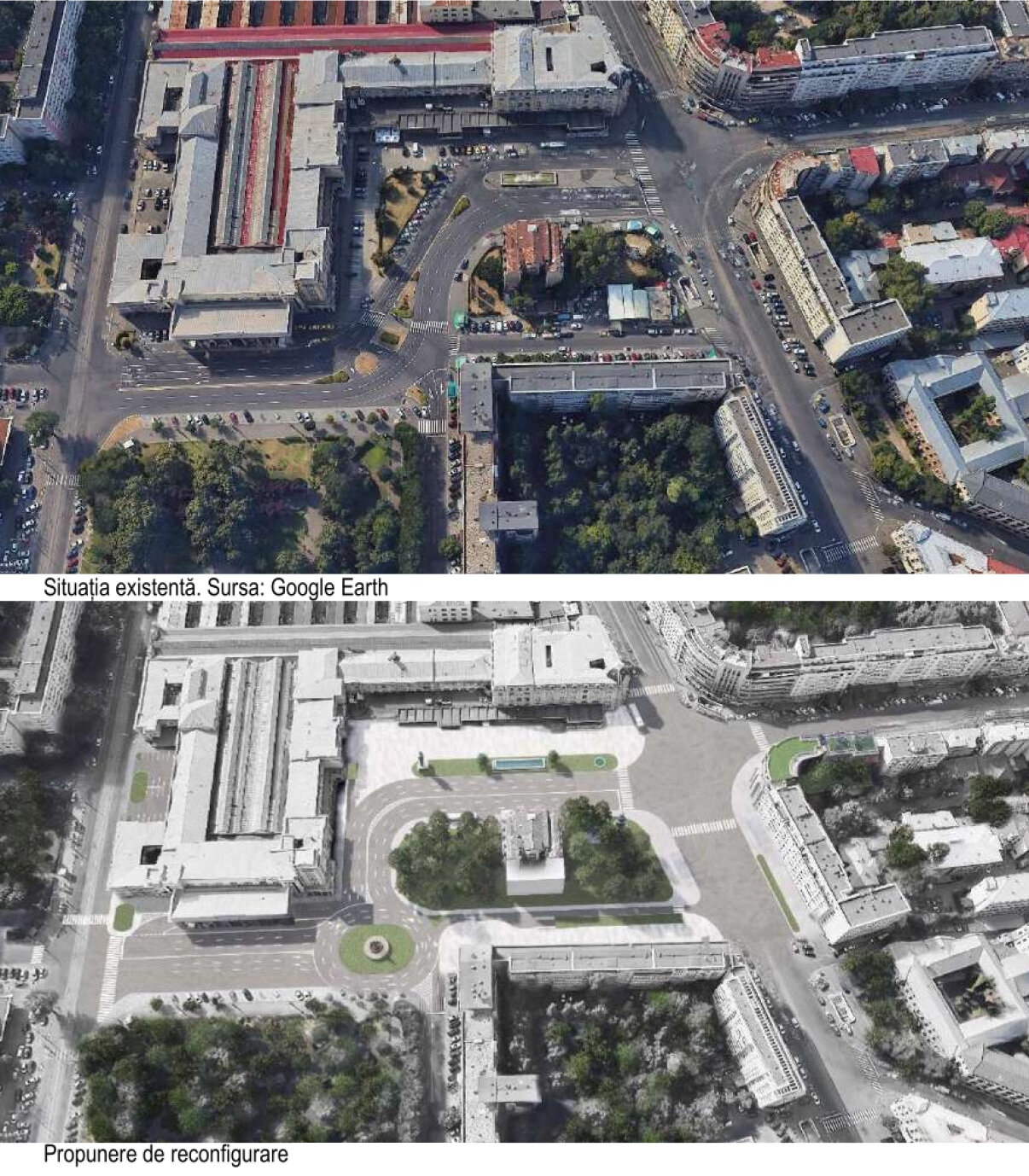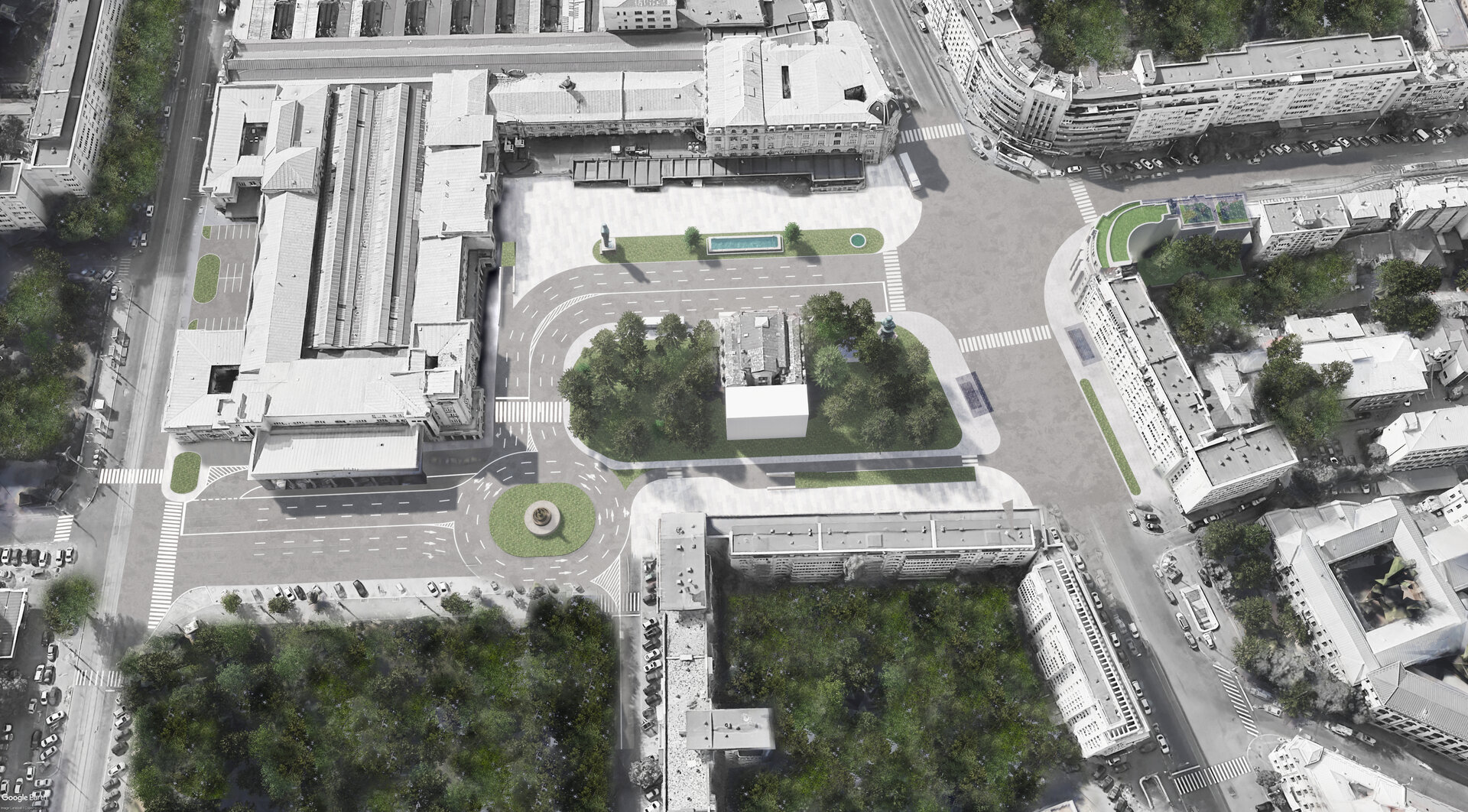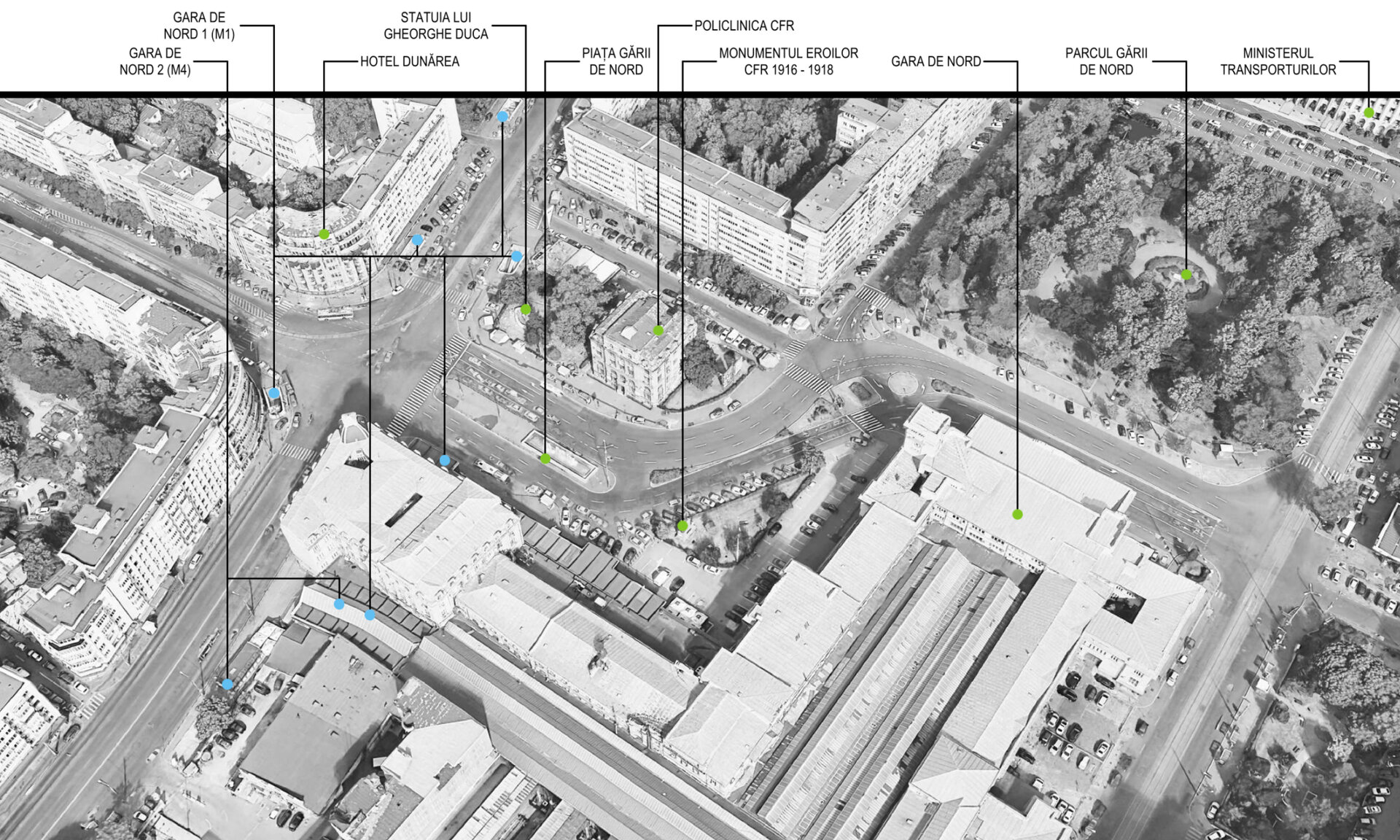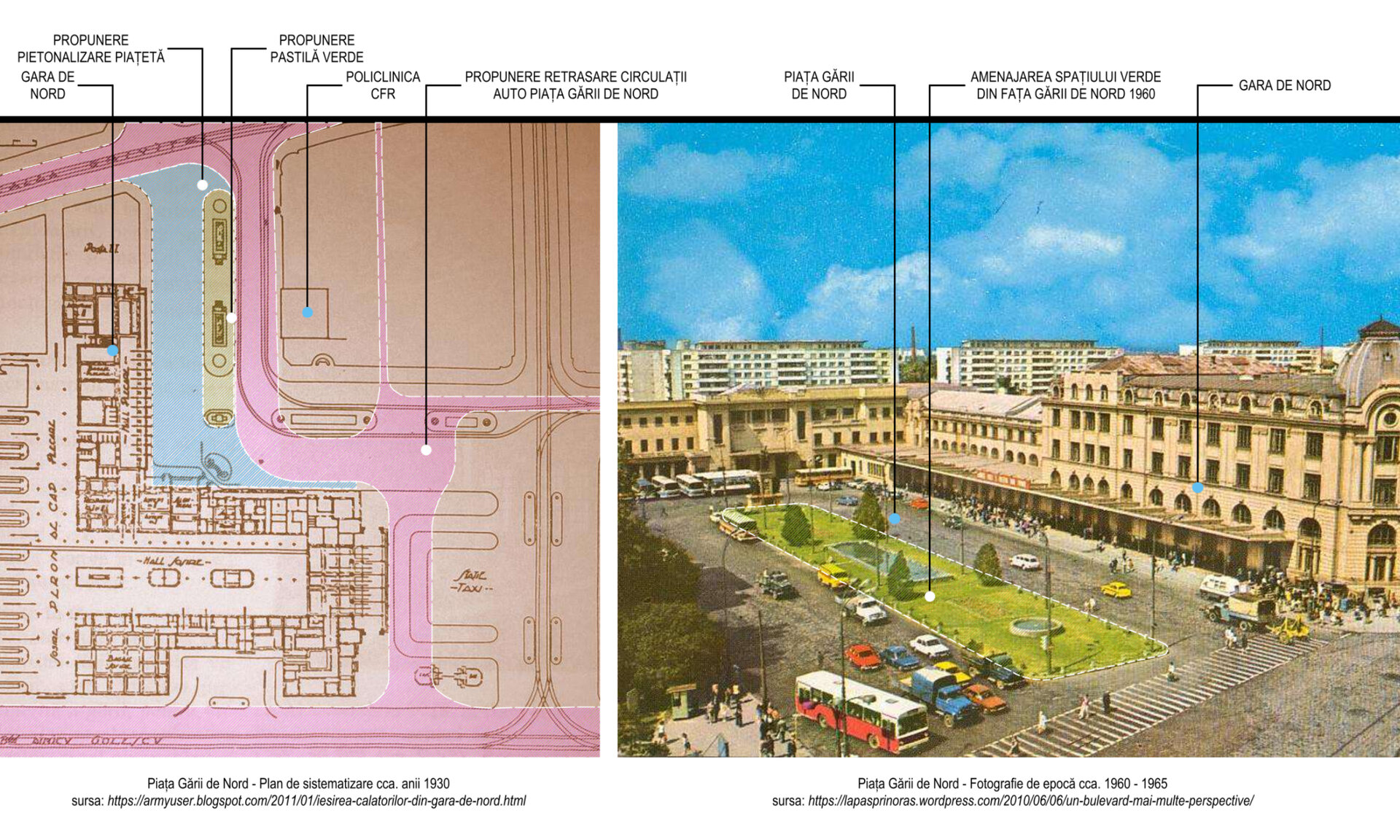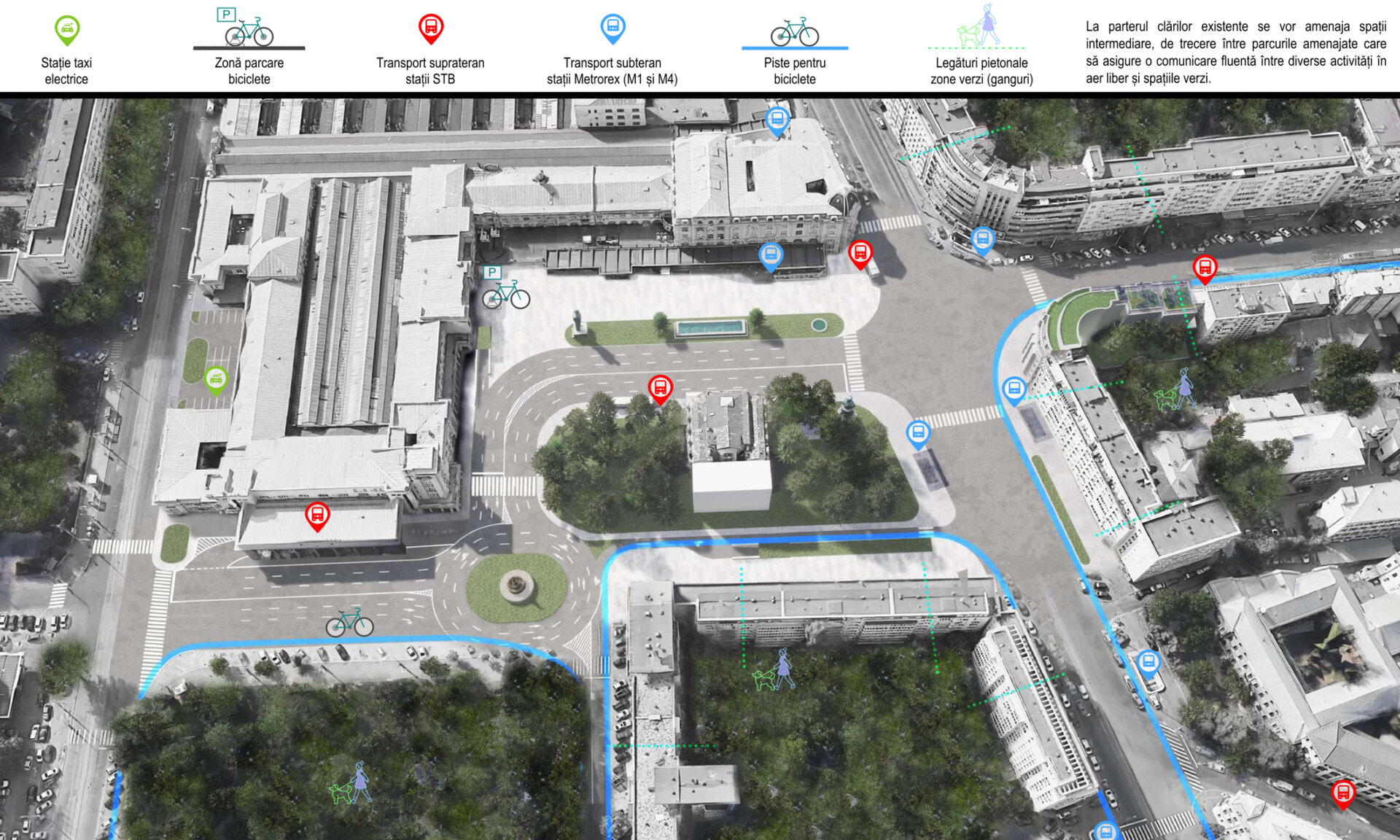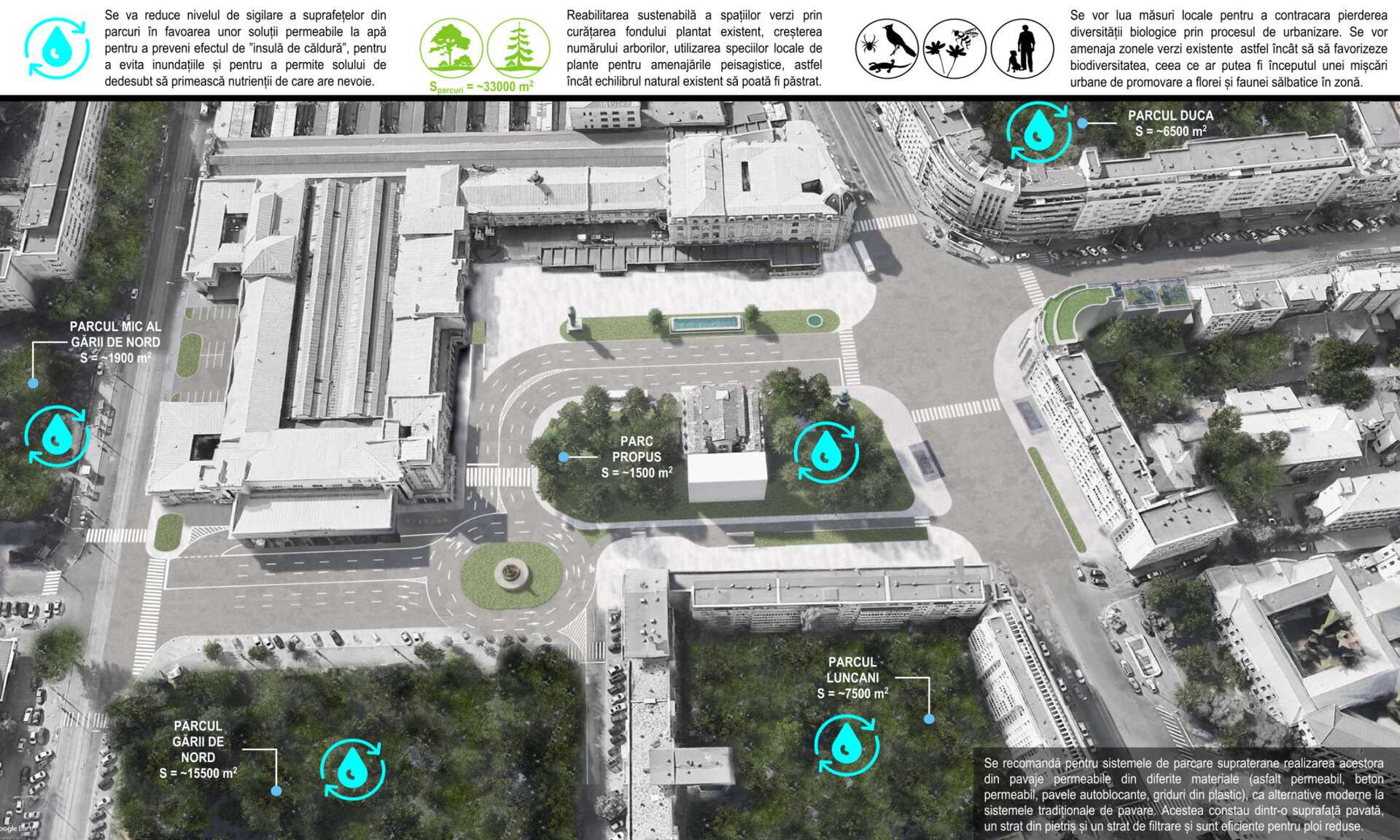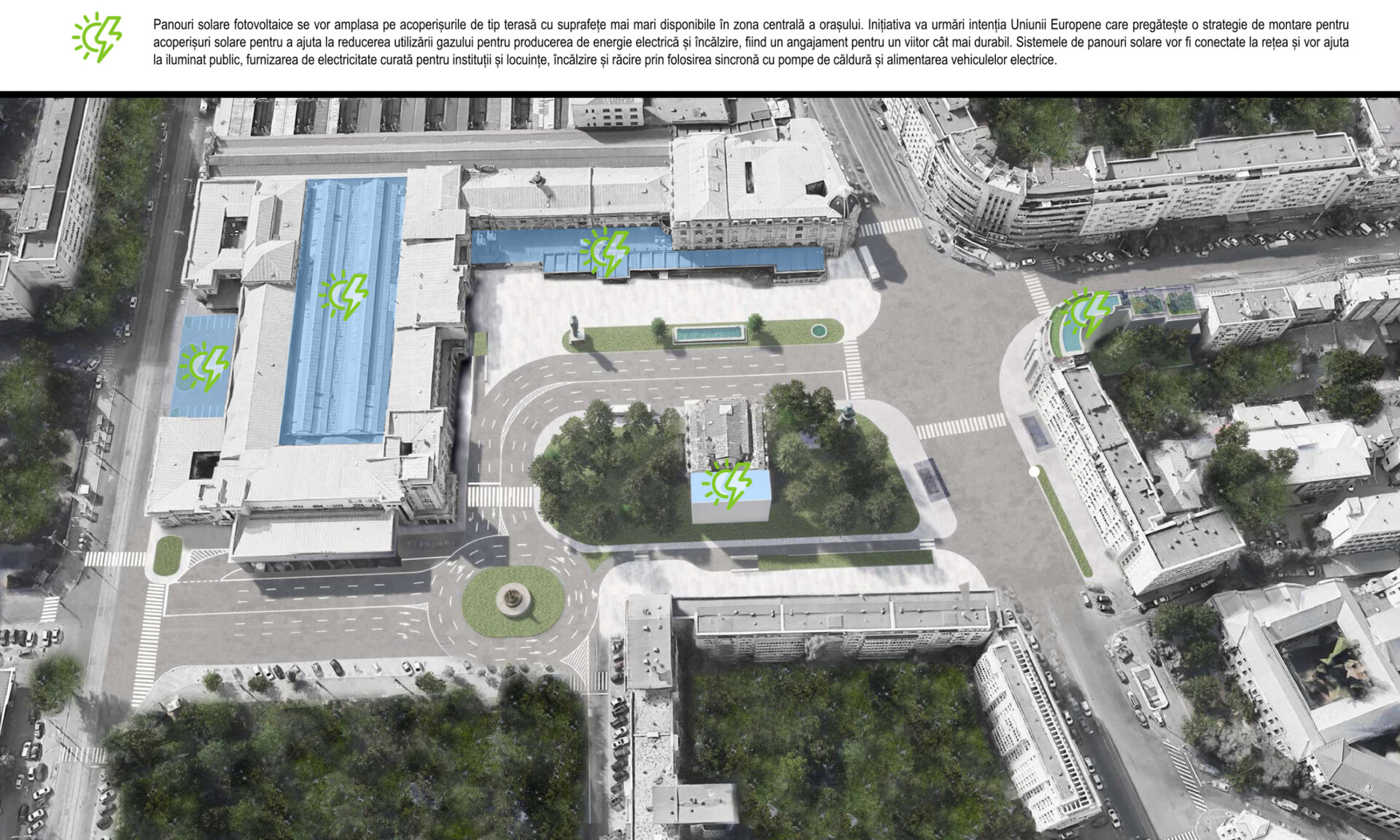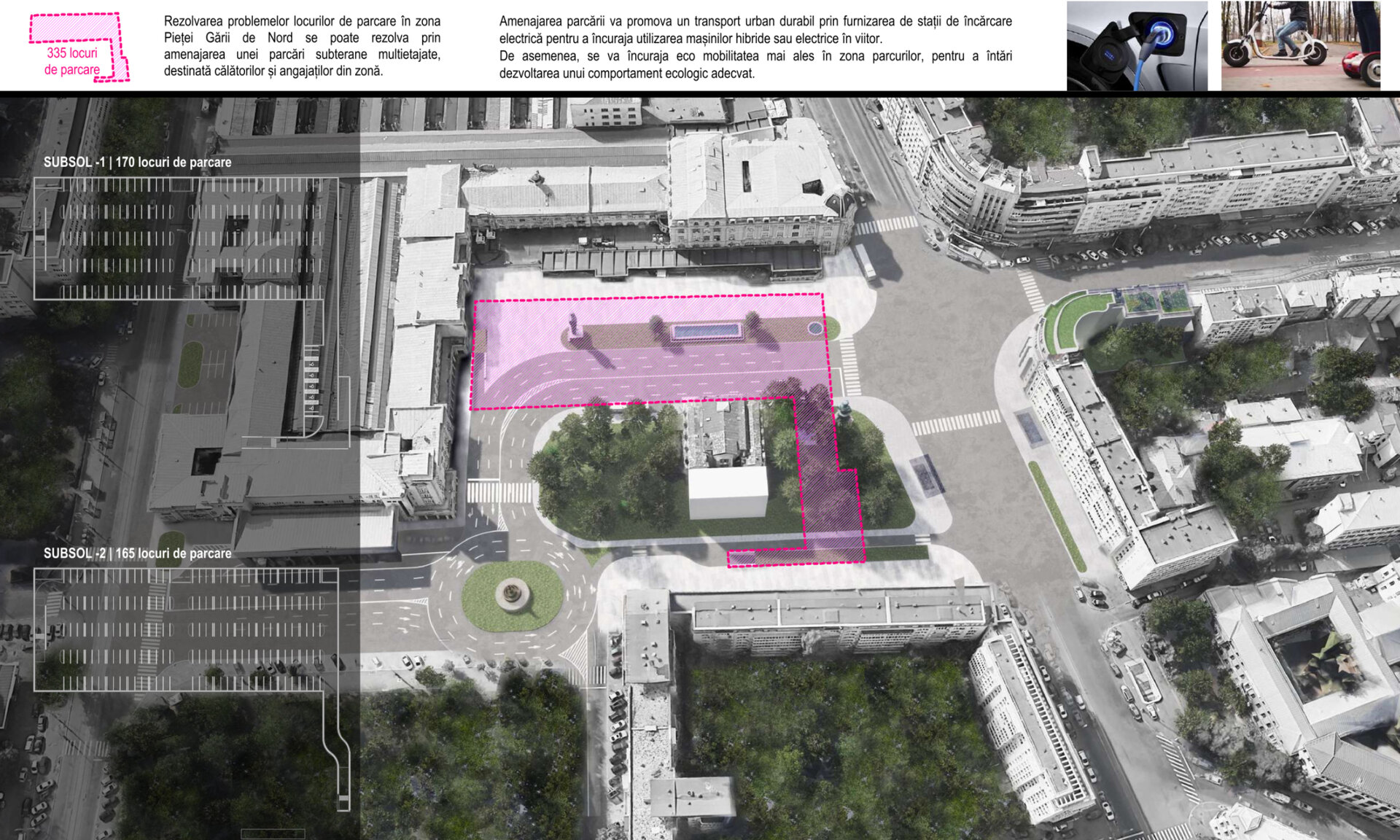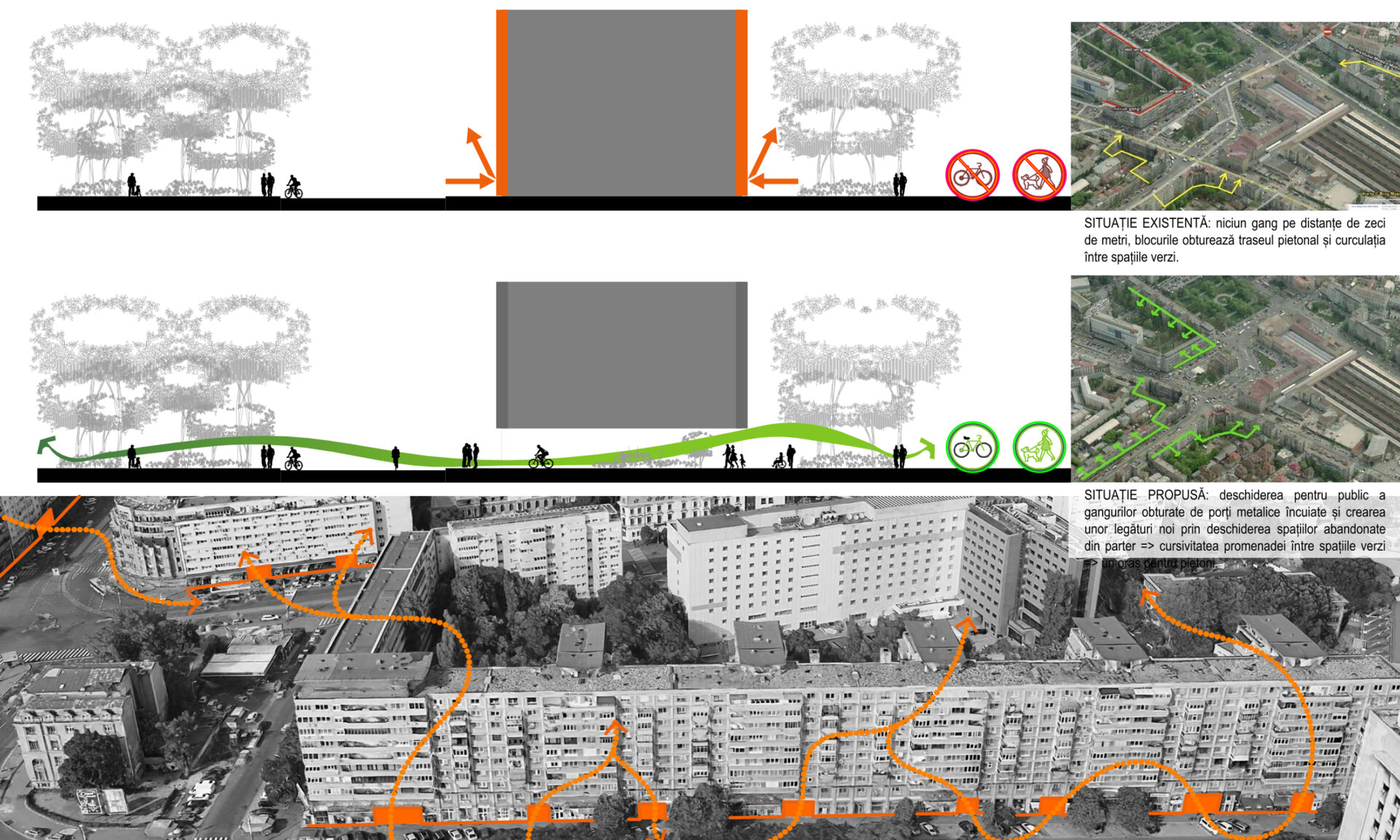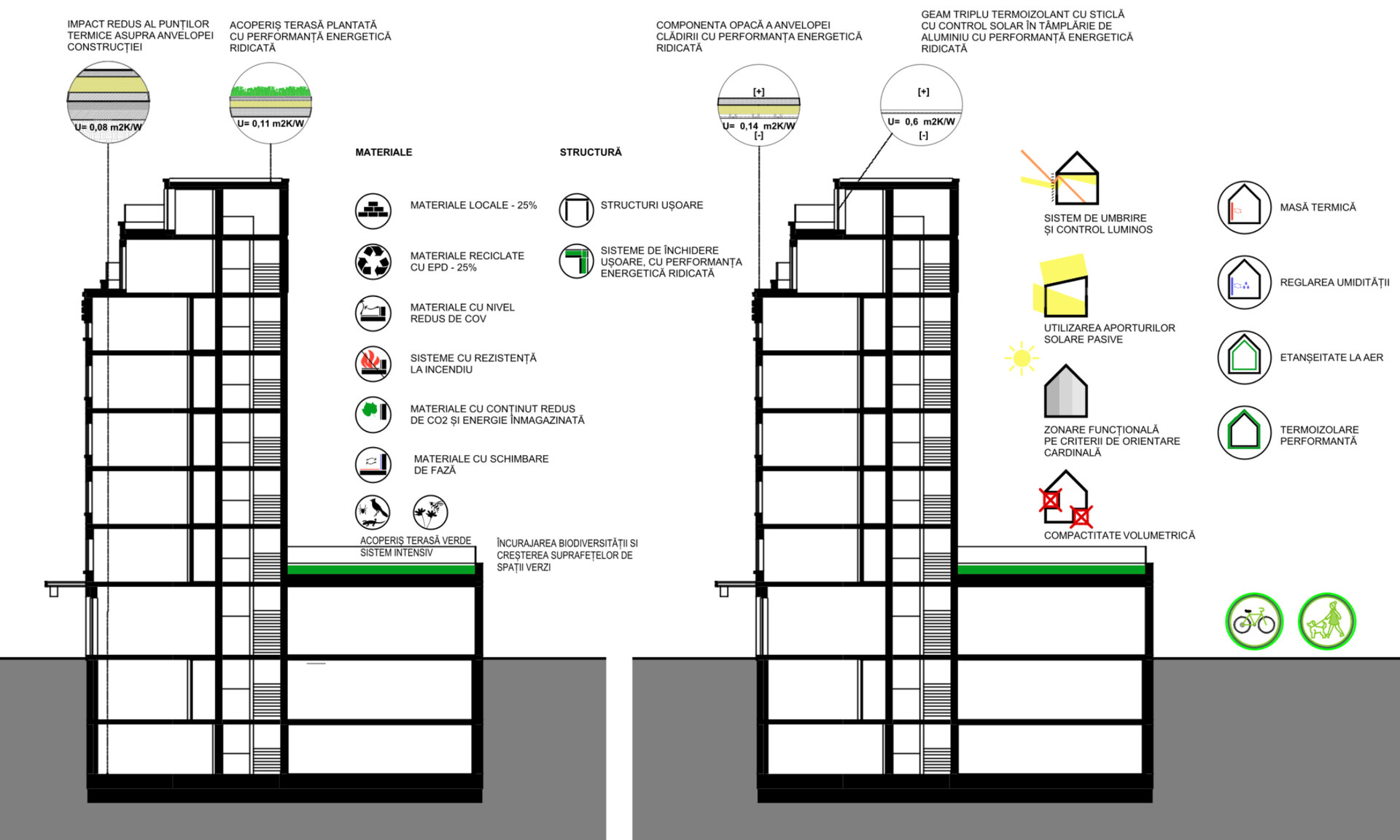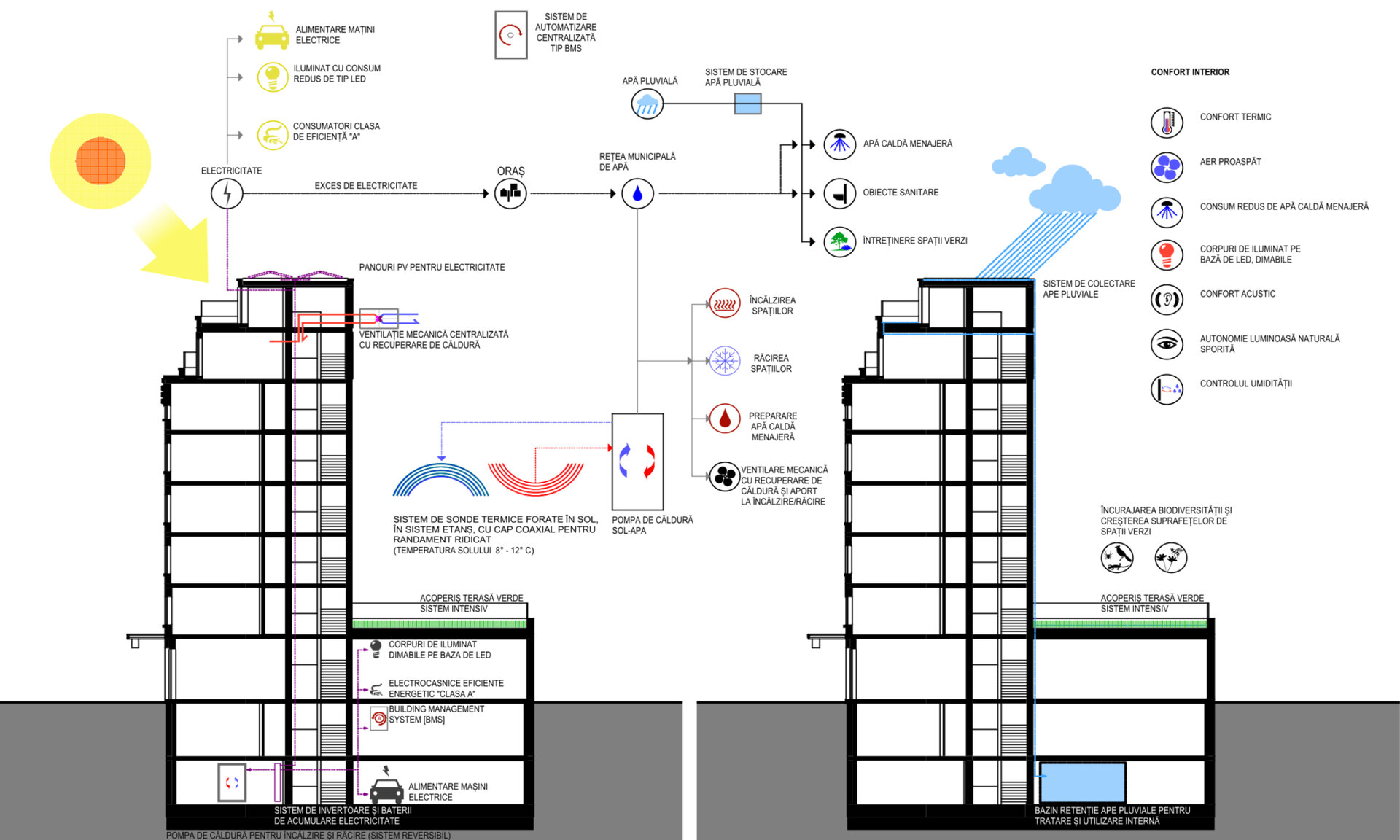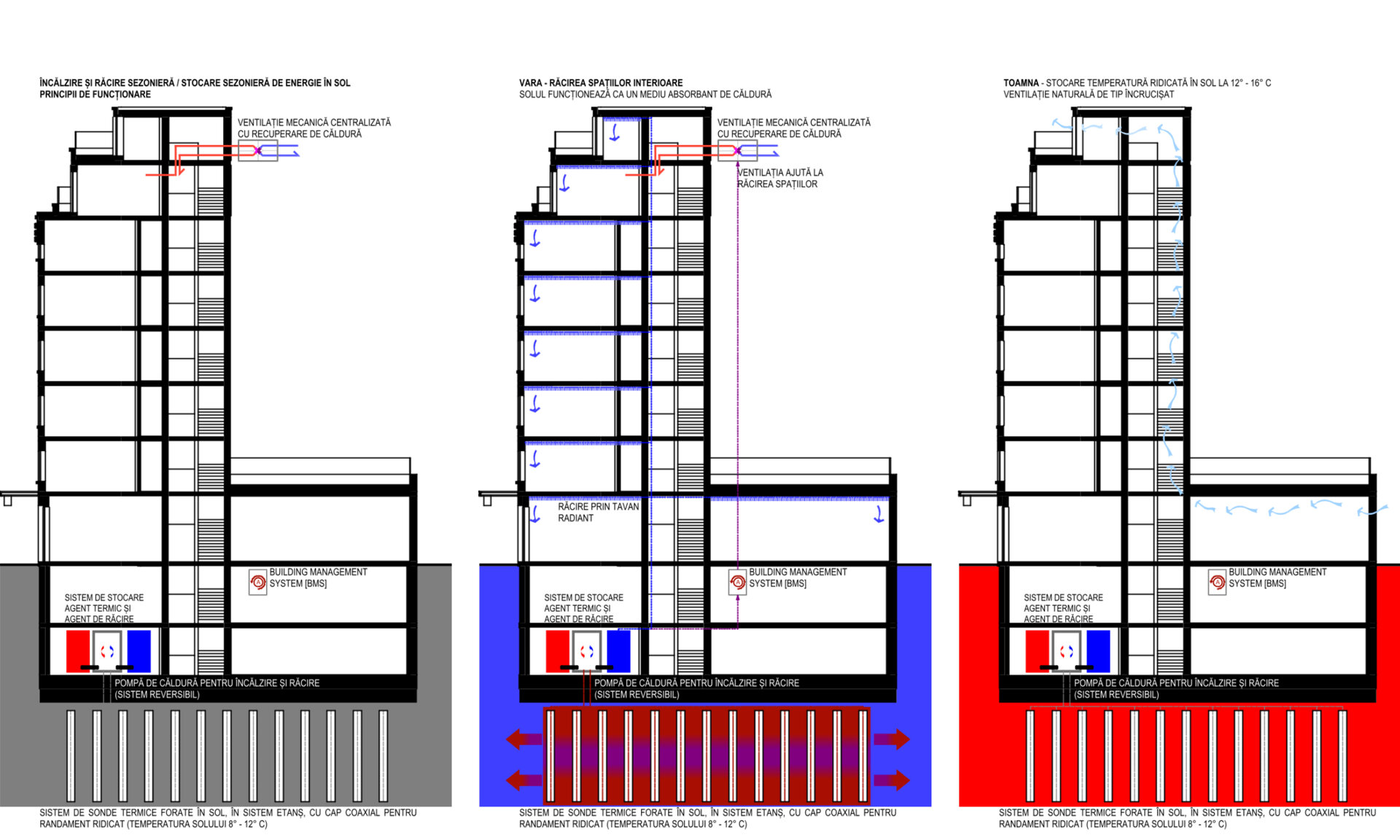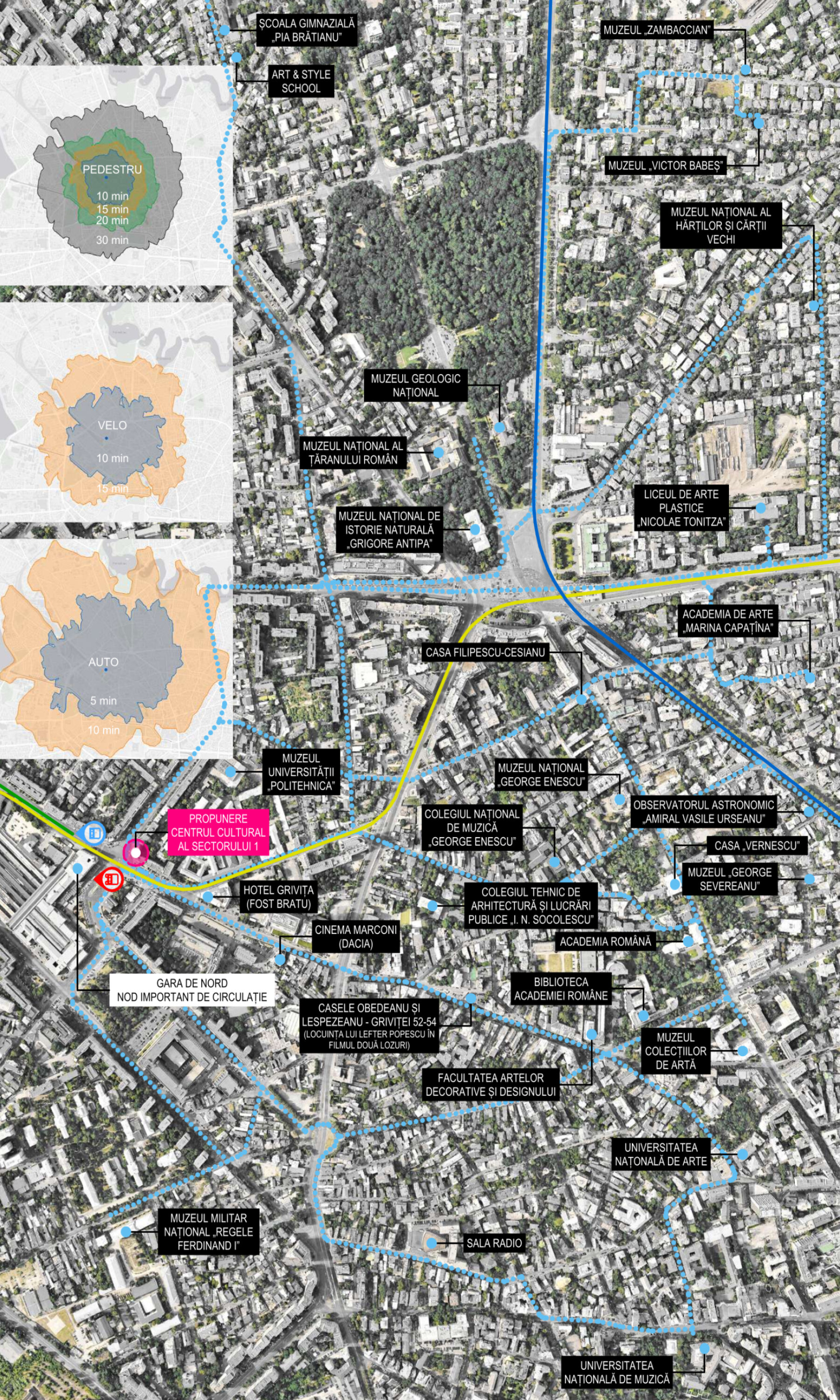
Urban regeneration of Gara de Nord Square through rehabilitation and functional conversion of Dunărea Hotel
Authors’ Comment
The North Railway Station, located in the square with the same name, is the most important and largest railway junction in Romania, connecting the capital with all regions of the country, being the largest gateway to Bucharest.
The evolution of this railway objective is influenced by several historical periods, among which we must mention the pre-war period - the construction works were launched on September 10, 1868 in the presence of King Carol I, the inter-war period - the role of the Northern Railway Station as a connection point for the citizens of Bucharest with more distant European spaces was defined, the Second World War - in the first part, it did not affect the development of the area, during that period, extensive reconfiguration works of the Station and the adjacent area took place, including the construction of the CFR Palace building. The second part of the War brings, in 1944, the bombing of the Station and the Market, but repairs are made quickly. Another important moment in the history of the railway station is the abdication of King Michael I, who left the country on 31 December 1947 from a platform of the Northern Railway Station. The period 1950-1989 brought other extensive changes and reconfigurations of the Market, in accordance with the new form of government, but also taking into account some of the principles of the Master Plan for the Systematization of Bucharest of 1935.
An interesting fact that has already become part of the daily routine is Gh. Duca. The boulevard is presented without a name in the 1935 master plan (sometimes it is presented as Bulevardul Nou) and was supposed to link the railway junction at the Gare de Nord with the road junction near Victoria Square. At the time when Bucharest's 1935 plan was still being drafted and pre-approved, the work proposed for the North Station area had already begun, and the end of the boulevard towards the railway station was flanked by two Art Deco buildings (the former Dumitru Dinu/Dunărea Hotel and the housing block opposite, also a former hotel) which can still be seen today, both in an extremely advanced state of disrepair.
At present, although there are several buildings in the Northern Railway Station Square and its adjacent streets in need of maintenance, renovation, rehabilitation and enhancement works, the most affected is the Danube Hotel building, which is the only one in the area completely disused, abandoned and now a health hazard, a source of infection, frequented by homeless people, and a real public danger in case of a major earthquake.
The former Danube Hotel building is located at the intersection of Griviței Street and Bdul. Gheorghe Duca, in the immediate vicinity of the North Railway Station, and can be considered, together with the whole urban space of the North Railway Station Square, as the first gateway to the city for those coming to Bucharest by train.
The Danube Hotel was built in the interwar period, most probably between 1934-1937, in the Art Deco style, which is specific to the period and was the dominant architectural style in the area of the North Railway Station Square, which supports and increases the historical and architectural value of the hotel. The architectural project for obtaining the building permit was identified, in the documentation for this study, in the PMB Archives, Technical Service, Green Sector IV Archive Fund, years 1932-1936, being drawn up by Arch. Constantin Cananău, who in the 1920s also designed the Marconi Cinema (later the Dacia Cinema), located nearby at 137 Calea Griviței, which is currently disused and in danger of collapse. In its heyday, the hotel had 70 rooms spread over seven floors, with commercial premises on the ground floor. After nationalisation in 1948, the hotel function was retained and the S.O.R.A. (Romanian Supply Company) shop was located on the ground floor until the post-1990 land transfer.
Major earthquakes in 1940 and 1977 left their mark on the building. Thus, the 1940 earthquake caused the collapse of the clock tower on the top floor of the hotel, centrally located on the facade of the building, on the corner of Duca Boulevard and Griviței Street, and the earthquake of March 1977 damaged the building as a whole, but it was not included in the subsequent rehabilitation plans of the buildings affected by this cataclysm, which marked the beginning of the slow but sure decline of the building. Furthermore, after 1989 the building was left to decay and any subsequent efforts by the new owners to rehabilitate, functionally convert or enhance the building were unsuccessful.
Witnessing several works of rearrangement, extension, systematization, reconfiguration done with the modernization and extension of the Cara de Nord Train Station, the Square, although it is called "square", currently prioritizes road traffic in an excessive way, being more an intersection than a real public square, for the citizens.
Pedestrian mobility spaces are relatively small in size and segregated from road traffic, with current road and pedestrian flows lacking coherence and having much reduced functionality.
The former Dunărea Hotel can become, through rehabilitation, functional conversion and enhancement, a Cultural Centre of District 1, which will coordinate cultural activities and become the main starting point along this cultural-artistic route of the Griviței Street.
The study includes two options for intervention on the building: one option involves intervention only on the hotel itself, and the second involves intervention on the housing estate next door. At the time of construction, the building complex included, in addition to the hotel, apartments for employees, which later became collective housing.
The main gateway to the city, the Gara de Nord Railway Station and the adjacent buildings in the Gara de Nord Square, can thus be given, in addition to being an important transport hub, a profound cultural-artistic character, the former Dunărea Hotel having the chance to restore the area's social atmosphere and the "lively" and animated aspect of the past, the Griviței Street neighborhood can become a new creative district for large-scale cultural events, coordinated by the Cultural Centre of Sector 1, located in the former Dunărea Hotel.
Public Architecture
- Together... Educational centre in Busua
- Outdoor gathering space
- The Rehabilitation of the Chisinau National Philharmonic
- Help Campus
- Lucian Blaga Highschool, Cluj-Napoca
- Connections with Dambovita. Cultural Center and Museum
- Data Center
- Museum of Emotions
- Urban Regeneration of the Cibin Market Area, Sibiu
- In-between echoes of extinction
- Events center
- Urban regeneration of Gara de Nord Square through rehabilitation and functional conversion of Dunărea Hotel
- Social center for the elderly
- Chapel
- Cibin Market
- Rehabilitation, Restoration, Consolidation and Expansion Secondary School in Huși, Vaslui County
- Modernization, rehabilitation and expansion of the Tineretului stadium, Brașov municipality
- Landscape design by the lake - CUG
- Alternative Togetherness
- Offices and Commercial Spaces on Puțul lui Zamfir Street
- School Campus
- Pescăruș Markethall
